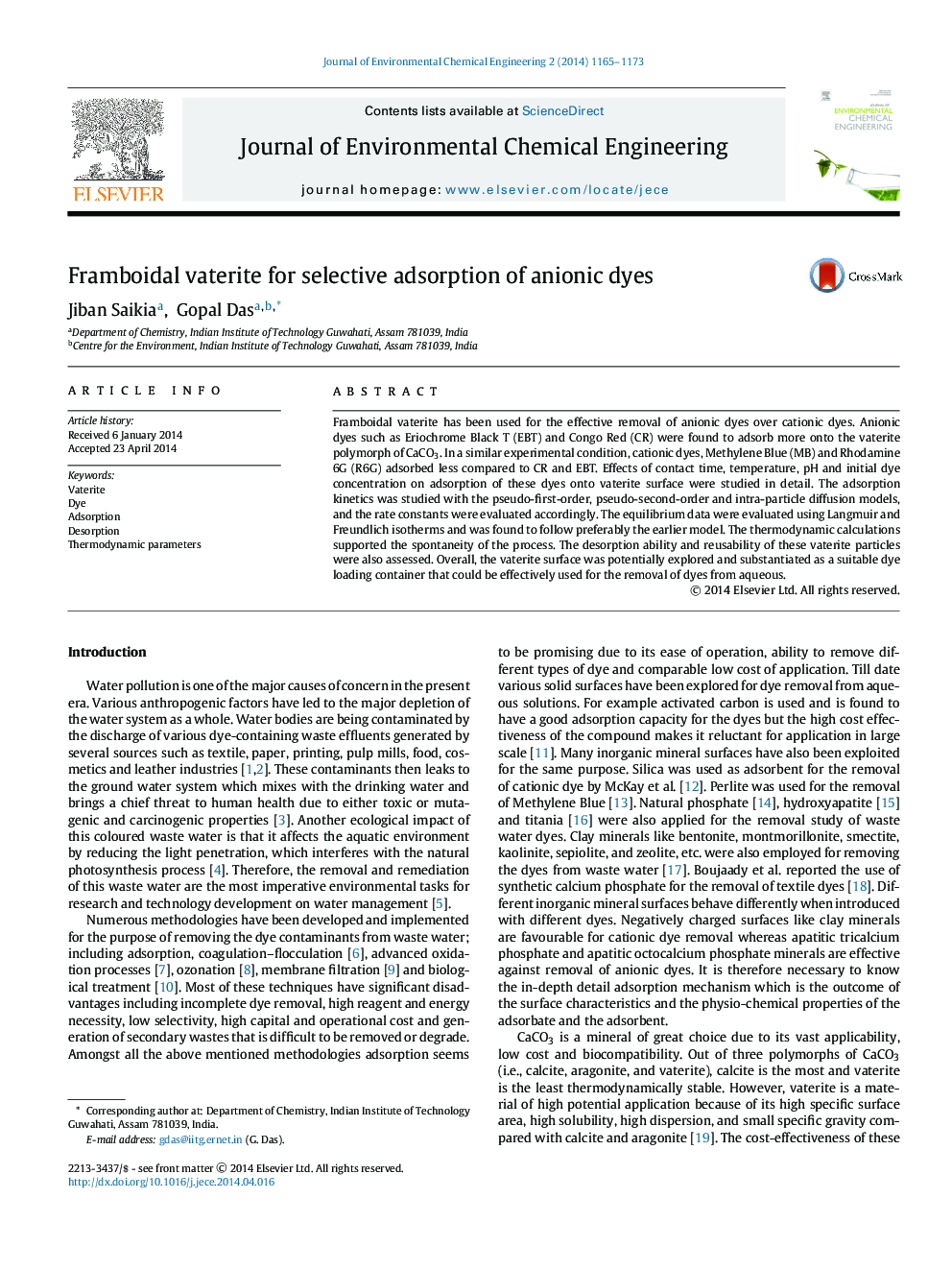| کد مقاله | کد نشریه | سال انتشار | مقاله انگلیسی | نسخه تمام متن |
|---|---|---|---|---|
| 221781 | 464265 | 2014 | 9 صفحه PDF | دانلود رایگان |

• Framboidal vaterite for the effective adsorption of dyes.
• Anionic dyes adsorbed more over cationic dyes.
• Vaterite showed high sorption capacity.
• The practical reusability of the vaterite has been reported.
Framboidal vaterite has been used for the effective removal of anionic dyes over cationic dyes. Anionic dyes such as Eriochrome Black T (EBT) and Congo Red (CR) were found to adsorb more onto the vaterite polymorph of CaCO3. In a similar experimental condition, cationic dyes, Methylene Blue (MB) and Rhodamine 6G (R6G) adsorbed less compared to CR and EBT. Effects of contact time, temperature, pH and initial dye concentration on adsorption of these dyes onto vaterite surface were studied in detail. The adsorption kinetics was studied with the pseudo-first-order, pseudo-second-order and intra-particle diffusion models, and the rate constants were evaluated accordingly. The equilibrium data were evaluated using Langmuir and Freundlich isotherms and was found to follow preferably the earlier model. The thermodynamic calculations supported the spontaneity of the process. The desorption ability and reusability of these vaterite particles were also assessed. Overall, the vaterite surface was potentially explored and substantiated as a suitable dye loading container that could be effectively used for the removal of dyes from aqueous.
Framboidal structured vaterite has been explored for the efficient removal of anionic dyes over cationic dyes. The positive surface of the vaterite in the acidic medium facilitates the interaction of the anionic dyes with the vaterite surface.Figure optionsDownload as PowerPoint slide
Journal: Journal of Environmental Chemical Engineering - Volume 2, Issue 2, June 2014, Pages 1165–1173